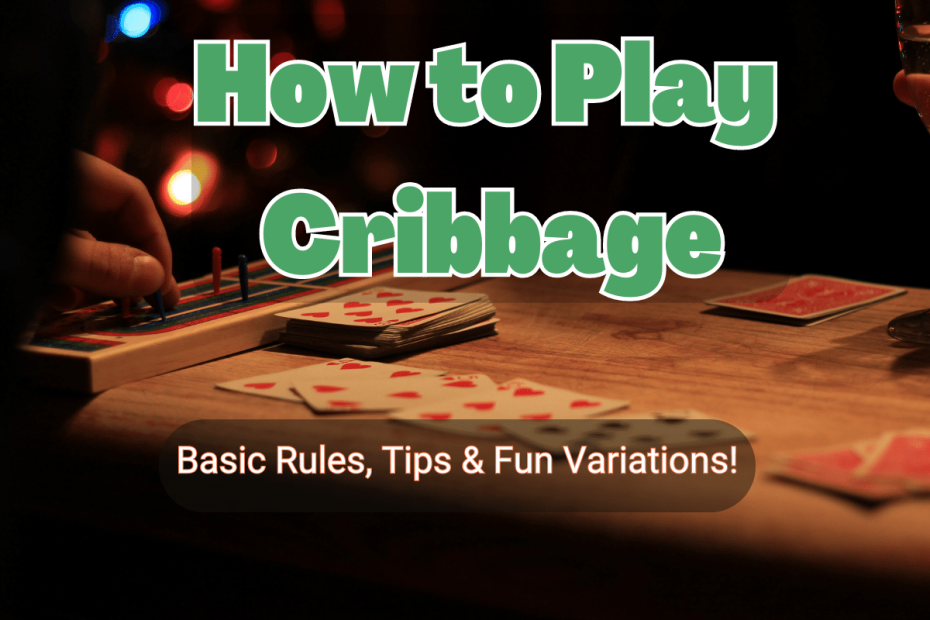Cribbage is a classic card game that has been enjoyed for centuries, and it’s still popular today! It’s certainly a staple on my list of hobbies and interests
Many consider playing cribbage their hobby and play anytime they can! Whether in person or online.
Cribbage is a two-player game that uses a standard deck of 52 playing cards. The objective of the game is to score points by creating card combinations and reaching a total score of 121, or higher.
While the game is played with a Cribbage board, today you can play Cribbage online with no need for a board. It’s also helpful for new players as the online version can help keep score and guide you as you learn the game.
Playing cribbage is a great card game that can help alleviate boredom, as it requires players to really focus on the game, make quick decisions, and use strategic thinking.
Additionally, this fun card game is a great way to socialize, relax, and connect with others – making it a popular game among seniors and those looking to stay mentally sharp.
So…
Let’s take a look at this classic card game and learn how to play, some strategies to make you successful, and everything you can think of about the game of cribbage.!
Article Content:

What’s Do you need to play a game of Cribbage?
To play this fun game of cards, you need a cribbage board, a deck of standard playing cards, and two to four players. Some players prefer to use a scoring peg, which is a small metal or plastic peg that is used to keep track of the score on the cribbage board.
However, a scoring pen and paper can also be used instead of a scoring peg.
- Standard deck of 52 cards
- 2-4 players
- Cribbage board OR other method to track score.
How to Play Cribbage for Beginners
Let’s begin…
Cribbage Rules & Gameplay
-
Shuffle & Deal Hands
The dealer shuffles the deck of 52 cards and each player is dealt six cards.
-
Choose your hands, throw 2 cards to the “Crib”
Each player reviews their hand and then chooses two cards to place face-down in the “crib” pile, which will be scored by the dealer at the end of the hand.
Each player should now have 4 cards in their hands.
-
Cut the deck! Reveal the cut card.
The non dealer will cut the deck. The dealer will flip over the top card to reveal the “cut card”. This card will be used later in the round.
Note: If the cut card is a Jack, the dealer is awarded 2 points.
….Now we move on to the next phase of the game, which is called “The Play”.
-
The Play Phase
In the play, each player takes turns playing one card at a time, trying to create card combinations that add up to a total of 31 points.
Points are also awarded for creating pairs, runs, and reaching exactly 15 and/or 31 points.
Once 31 points is met, or the last highest card is played as a “go”, the count starts over and continues until both players have laid all their cards down.
Notes:
Go: If a player cannot play a card without exceeding a total of 31, they say “Go” and the other player continues to play until they can no longer do so. The player who says “Go” earns 1 point for each card played before the other player is unable to play.
Last card: The player who plays the last card in the play phase earns 1 point.
Nobs: If the Jack of the same suit as the starter card is in the crib pile, the dealer earns 1 point.
Keep your hands separate, including the crib (left untouched until now).
-
The Count Phase
After the play phase, the show phase then begins, where each player shows their hands and scores points for card their hands combinations.
Points are awarded to each player for pairs, runs, flushes, and any card combination that equals 15.
The player who did not deal that round, counts their hand first.
The dealer will count his hand, and the crib, after.
This is extremely important towards the end of the game! Who counts first can decide the winner in a close match!
-
Repeat until one player wins!
Once a player reached 121 points, the end of the cribbage board, that player has won the game!
So, now we have the basics of the game down…
Let’s take a look at cribbage scoring and what makes a good hand!

Cribbage Card Values
In cribbage, each card is assigned a point value as follows:
- Ace: 1 point
- Two through Ten: face value (i.e. a two is worth 2 points, a three is worth 3 points, etc.)
- Jack: 10 points
- Queen: 10 points
- King: 10 points
It’s important to note that face cards (Jack, Queen, King) do not count as 10 points when played for a combination like they do in some other card games.
Instead, they are each worth 10 points on their own.
Additionally, aces can be used to form runs (i.e. A-2-3), but they do not form a run with a King (i.e. K-A-2 is not a run).
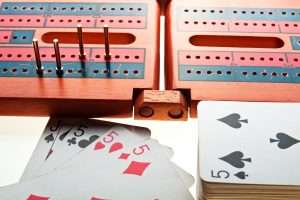
Cribbage scoring Chart & Combinations
Cribbage scoring is based on a combination of card values and patterns created by the cards played.
The following list is a breakdown of the common ways to score in cribbage:
- Fifteens: Two or more cards that add up to 15 points are worth 2 points. For example, a combination of 7, 8 and Jack would be worth 2 points.
- Pairs: Two cards of the same rank are worth 2 points. Three of a kind is worth 6 points, and four of a kind (also known as a “double pair royal”) is worth 12 points.
- Runs: Three or more cards in sequence (regardless of suit) are worth 1 point per card. For example, a run of 3, 4 and 5 is worth 3 points, and a run of 4, 5, 6 and 7 is worth 4 points.
- Flushes: If all cards in a player’s hand are of the same suit, the hand is worth 4 points. If the starter card (the card turned up after the crib pile is created) is also of the same suit, the hand is worth 5 points.
- His Nobs: If a player has a Jack of the same suit as the starter card, they earn 1 point.
10 Cribbage lingos & Terms:
Cribbage has its own unique set of terminology, including terms like “pegging,” “crib,” “go,” “counting out,” and “skunk.”
Understanding these terms is essential for playing the game effectively.
- Nobs – scoring one point for having the Jack of the same suit as the cut card
- Go – a player says “go” when they cannot play any more cards
- Fifteen-two – a combination of cards totaling 15 points, including the two
- Run – three or more cards of consecutive rank
- Double run – a run of three or more cards, which includes a pair
- Muggins – a rule that allows a player to score points if their opponent fails to count all their points correctly
- Skunk – when a player wins by more than 30 points, it’s called a skunk
- Double skunk – when a player wins by more than 60 points, it’s called a double skunk
- Crib – the pile of cards that is set aside for the dealer to score later
- Pegging – using your pegs to keep score on the cribbage board

Cribbage strategies
So, is this card game all about blind luck?
Of course not!
Let’s take a look at some strategies when creating your hand and going through the play phase…
- Focus on the count: Keep a close eye on the total count of the cards played, as this will determine when the play phase ends and help you calculate potential scoring opportunities.
- Play defensively: Try to limit your opponent’s options by playing cards that won’t allow them to create easy scoring combinations, such as avoiding 5s and 10s, which can add up to 15 points.
- Keep a balanced hand: When discarding cards to the crib pile, try to create a balanced hand that includes both high and low cards, as well as cards of different suits, to increase the likelihood of creating scoring combinations.
- Consider the starter/cut card: When deciding which cards to keep in your hand and which to discard, take into account the starter card that will be turned up after the crib pile is created, as this can greatly affect your scoring opportunities.
- Plan ahead: Try to anticipate potential scoring opportunities and plan your plays accordingly, while also being flexible enough to adapt to changing situations.
- Don’t be afraid to play defensively: If you’re in the lead, consider playing more defensively to limit your opponent’s scoring opportunities and protect your lead.
- Keep track of your opponent’s discards: Try to keep track of which cards your opponent frequently discards to the crib pile, as this can give you valuable information about what cards they may have in their hand and how they may be planning to play.
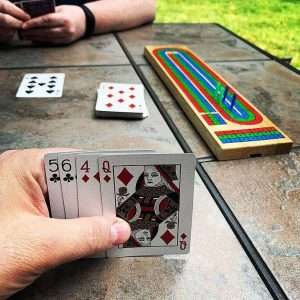
Additional Cribbage tips
- Play to the crib: Keep in mind that the crib pile can be a valuable source of points, so try to create a hand that will score well in combination with the starter card.
- Practice pegging: The pegging phase of the game can often be just as important as the hand and crib, so try to develop a strong pegging strategy and keep track of the cards that have been played.
- Be patient: Cribbage can be a game of ups and downs, so don’t get discouraged if you fall behind early on. Keep playing strategically and look for opportunities to catch up later in the game.
- Keep it simple: While there are many different potential scoring combinations, sometimes the simplest play is the best. Don’t overthink things or try to force a certain combination if it’s not there.
- Practice, practice, practice: As with any game, the more you play, the better you will get. Consider playing with different opponents or joining a league to improve your skills.
Cribbage tournaments
Believe it or not, there are cribbage tournaments!
What are cribbage tournaments?
A cribbage tournament is a competition where players compete against each other to see who can score the most points in a series of matches.
These tournaments are usually held over one or more days, with players advancing through a bracket until a champion is crowned.
Types of tournaments?
There are many different types of tournaments, including individual play, team play, and handicap events.
Some tournaments also have specific rules or formats, such as double elimination or best-of-three matches.
- Individual Play Tournaments: In individual play tournaments, players compete against each other in a series of matches to determine a winner. These tournaments can be single-elimination or double-elimination and can range in size from small local events to large national or international competitions.
- Team Play Tournaments: In team play tournaments, players form teams and compete against each other in matches. Teams can be made up of two, three, or more players, and matches can be played in a variety of formats, such as singles or doubles play.
- Handicap Tournaments: In handicap tournaments, players are assigned a handicap based on their skill level, with less skilled players receiving a higher handicap than more skilled players. This evens the playing field and allows players of all levels to compete against each other.
- Doubles Tournaments: In doubles tournaments, players form pairs and compete against other pairs in matches. Doubles tournaments can be played in a variety of formats, such as best-of-three or round-robin.
- Charity Tournaments: Some cribbage tournaments are held for charity, with proceeds going to a designated organization or cause. These tournaments can be a great way to have fun while supporting a good cause.
- Online Tournaments: With the rise of online gaming, many cribbage tournaments are now held online. These tournaments can be played from anywhere in the world and allow players to compete against each other without leaving their homes.
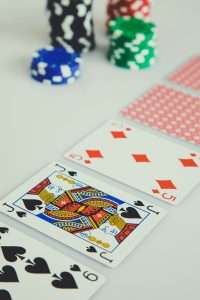
Prize Pools:
Many tournaments offer cash prizes for top finishers, with larger events sometimes offering thousands of dollars in total prize money.
The amount of the prize pool can vary depending on the size of the tournament and the level of competition.
So, this fun card game is a hobby that could make you money!
Rankings and Ratings:
In addition to cash prizes, many tournaments also offer ranking or rating points.
These points are used to determine a player’s standing in the national or international cribbage community, and can be used to qualify for higher-level tournaments.
Preparation and Strategy:
To perform well in cribbage tournaments, players need to be prepared both mentally and physically.
This includes developing a strong strategy for both the hand and pegging phases of the game, as well as practicing against a variety of opponents and scenarios.
Tips for Success in Tournaments:
Some key tips for success in cribbage tournaments include staying focused, keeping a positive attitude, and being adaptable to changing conditions and opponents.
It’s also important to know the rules and formats of each tournament in advance, and to arrive early to warm up and get acclimated to the playing environment.
Benefits of playing cribbage
Cribbage is a great hobby with many benefits! These benefits are:
Mental stimulation: Cribbage requires players to think strategically and mentally calculate their scores, providing a good workout for the brain.
Social interaction: This card game is often played with friends or family members, providing an opportunity for social interaction and bonding.
Low-cost entertainment: Cribbage requires only a deck of cards and a cribbage board, making it a low-cost form of entertainment.
Stress relief: Playing cribbage can be a relaxing and enjoyable way to unwind and reduce stress.
Improved math skills: Cribbage involves a lot of mental math, helping players to improve their math skills and mental calculation abilities.
Increased focus and concentration: Playing cribbage requires players to focus and concentrate, helping to improve these skills over time.
Enhance memory: Playing cribbage can help to improve short-term memory skills, as players must keep track of the cards that have been played and calculate their scores accordingly.
Cribbage board
What is a cribbage board?
A cribbage board is a rectangular wooden board that has a series of holes drilled into it. These holes are used to keep score during a game of cribbage.
The board usually has two sets of 60 holes each, with one set running down each side. The holes are arranged in a specific pattern, with every fifth hole usually marked with a small bump or peg.
The board also has a starting area, usually marked with the word “start,” where each player places their scoring pegs at the beginning of the game.
The cribbage board is an essential component of the game, and its unique design allows players to keep track of the score with ease.
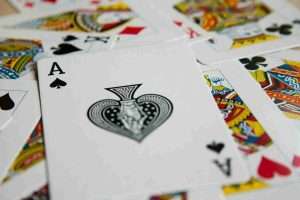
Cribbage variations
Did you know there are a bunch of variations to the standard rules of cribbage?
Let’s take a look…
- Three-Handed Cribbage: In this variation, three players compete instead of the usual two. This 3 player card game is played with a modified board that includes three tracks, and each player is dealt five cards instead of six.
- Lowball Cribbage (or Backwards Cribbage): In this cribbage variation, the goal is to score as few points as possible. Points are awarded for the lowest possible combination of cards, and the player with the lowest score at the end of the game is declared the winner.
- Muggins: In this variation, players can “mug” each other by scoring points that their opponent missed. For example, if a player fails to count a combination of cards, their opponent can claim those points by calling “muggins.”
- Captain’s Cribbage: In this variation, the game is played with teams of two. Each player on the team is designated as a captain, and they must alternate leading the play and choosing which cards to keep in the crib.
- Auction Cribbage: In this variation, players bid on the right to be the first to play their cards. The highest bidder gets to play first and also receives the crib.
- Jokers Wild: In this variation, two jokers are added to the deck, which can be used to form wild card combinations.
No matter which variation you choose to play, each offers its own unique challenges and opportunities for strategic play.
Pagat has a list of cribbage variations you can try out and spice up the traditional card game.
Online Cribbage

Looking to play cribbage online?
Here are a few popular websites and programs people use when they want to play cribbage!
- PlayOK: a website that offers a free online cribbage game with the ability to play against the computer or with other players online.
- GameColony: a website that offers a variety of games, including cribbage, with the ability to play for free or for cash prizes.
- Cribbage.io: A simple website you can use to practice playing.
- CardsJD: get straight to the point, login or play a guest and get connect to hundreds of players online.
Cribbage apps
There are a lot of great apps and programs in which to play cribbage with.
Here are a few to check out!
- Cribbage Pro: a popular app available for iOS and Android devices that allows players to play against the computer or with other players online.
- Cribbage Classic: a free program available for Windows and Mac that allows players to play against the computer.
- Cribbage Club Online: an online community where players can play against others from around the world for free or for cash prizes.
Cribbage history & Where it’s From

Cribbage is a card game that has been around for centuries. Its exact origins are unclear, but it is believed to have been invented in the early 17th century in England.
The game is thought to have evolved from an earlier game called “noddy,” which was played with a board and pegs.
Over time, this card game became increasingly popular in England and spread to other parts of the world, including the United States. It became particularly popular among sailors, who would play the game during long voyages to pass the time.
In the 19th and early 20th centuries, cribbage was widely played in taverns and pubs throughout the English-speaking world. It also became a popular pastime among members of the military, who would play the game during downtime.
Today, the game remains a beloved and enjoyed by people of all ages and backgrounds.
It is often played in social settings, such as pubs, clubs, and tournaments, and is also commonly played online. Despite the many changes that have taken place in the world since its invention, cribbage has remained a favorite game of millions of players worldwide.
Frequently Asked Questions (FAQ’s)

What is the Cribbage highest or perfect hand?
The highest possible hand in cribbage is 29 points.
This hand can be achieved by having a hand that consists of a Jack and three fives, with the fifth card being the same suit as the Jack.
This combination is sometimes referred to as a “perfect hand.”
What is a Cribbage skunk?
If a player wins by more than 30 points, they are said to have “skunked” their opponent.
What is the “double skunk” line?
If a player wins by 60 or more points, they are said to have crossed the double skunk line.
What is “nobs”?
If a player holds the Jack of the same suit as the card turned up by the dealer, they can score one point.
Nobs, also known as the “right Jack,” and a unique scoring opportunity.
Can you play cribbage without a board?
Yes! You can simply keep track of your score by using pen and paper. Or any other way to keep track of the points scored for each player, until one of you reach 121.
While it is possible to keep score in cribbage without a board, using a board makes it easier to keep track of points and progress throughout the game.
Many players find that using a board enhances the overall experience of playing cribbage.
Is cribbage luck or skill?
Both! Cribbage is a game that requires both luck and skill. While the cards dealt to each player are largely based on chance, skillful play and strategic decision-making can greatly impact the outcome of the game.
Can you Play Cribbage with three players?
Yes! While it is possible to play with three players, it can be difficult to keep score and maintain the same level of strategic play as with two players.
Many players prefer to play the game with two or four players for this reason.
Can you play cribbage with 4 players?
Yes, cribbage is traditionally played with two players, but it can also be played with four players in teams of two.
How to play cribbage with 5 players?
Cribbage can be played with 5 players using either a 3-player and 2-player game or a 4-player and 1-player game.
In a 3-player and 2-player game, players form teams of two, with one player being the dealer for the round.
The 4-player and 1-player game is played in the same way as regular a regular game, with one player sitting out each round.
Are aces high or Low?
Aces are low cards and count for 1 point.
How many cards?
6 cards are dealt to each player in a 2-player cribbage game.
Other Resources and helpful links:

Hey Everyone!
Chritt here. I just want to say THANK YOU SO MUCH for visiting Boredom Busted. It’s been my passion project going on 7 years now.
I need a favor though. If you have found the page you landed on or explored useful in any ways – please please please share, or comment.
The more engagement on this page – the more I can continue to write and provide helpful content to my visitors like you.
I love you all and thank you again for visiting! Don’t be a stranger and hope to see you back, soon!

